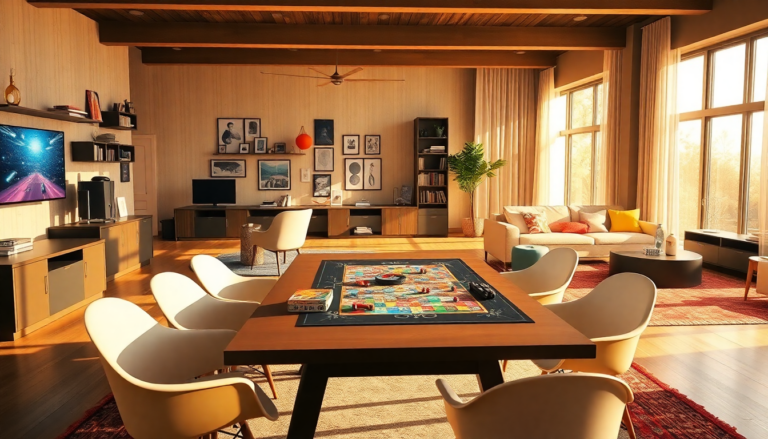Argomenti trattati
In a world where family activities often get sidelined by digital distractions, creating a vibrant game room can bridge that gap, offering a space for both fun and connection. Whether you’re an avid gamer or simply enjoy a good board game, a well-designed game room can become the heart of family entertainment. So, how do you create an engaging game room that appeals to everyone, regardless of age? Let’s explore some inspiring setups from notable personalities to spark your creativity.
Game Room Design Trends You Should Know
Game rooms have come a long way! Gone are the days of simple setups with just a few toys. Today, they’re elaborate spaces designed to foster interaction and fun. One exciting trend is combining retro arcade games with modern gaming consoles and classic board games. This blend not only creates a nostalgic vibe for adults but also introduces kids to timeless classics. Plus, integrating indoor and outdoor spaces is gaining popularity, allowing for seamless transitions from gaming inside to enjoying the great outdoors. How cool is that?
Another trend is personalizing game rooms to reflect family interests and dynamics. Think themed decor inspired by your favorite movies or beloved games. The goal? To create a space that feels uniquely yours, where everyone feels welcome and eager to join in on the fun.
What Makes a Game Room Successful? Let’s Analyze
Now, let’s get to the heart of the matter: the success of a game room isn’t just about the number of games it houses. It’s really about how well it encourages engagement and interaction among family members. When evaluating your game room’s performance, consider these key metrics:
- Engagement Rate: How frequently do family members use the space? Are they actively participating in activities together?
- Diversity of Games: Are there games for various age groups and interests, ensuring everyone finds something enjoyable?
- Comfort and Accessibility: Is the space cozy and inviting? Are games and seating easily reachable?
From my experience, focusing on these aspects can significantly enhance your game room’s overall experience. By crafting a space that’s not only functional but also inviting, you’ll encourage more family gatherings around games. Who wouldn’t want that?
Case Study: The Ultimate Family Game Room
Let’s take a look at a recent project that perfectly illustrates these principles. A family transformed their underutilized basement into a game room that catered to their children’s interests while appealing to the adults in the household. They began by assessing their space and identifying features that could be improved.
They created a versatile layout that allowed for multiple activities at once, including dedicated areas for board games, video gaming, and even a vintage arcade corner. Custom-built arcade machines featuring classics like Pac-Man added a nostalgic backdrop that thrilled the kids while giving parents a blast from the past.
Comfort was key. They incorporated seating that accommodated both small children and adults, ensuring everyone could relax while enjoying their favorite games. An air hockey table and a unique Whac-a-Mole style game featuring family members added plenty of laughter and friendly competition!
After just one month of use, metrics indicated that family game nights surged by 70%. Parents reported that their kids were interacting more with each other—minus the usual tech distractions. Talk about a success story!
Practical Steps to Implement Your Game Room
Ready to create your own game room? Start with a solid plan. Here are some actionable steps to get you going:
- Assess Your Space: Determine the available space and figure out how to divide it for different activities.
- Select Your Games: Choose a mix of classic and modern games that cater to all ages. Don’t forget to include interactive options that encourage group play!
- Create a Comfortable Environment: Invest in cozy seating and suitable lighting to craft an inviting atmosphere.
- Incorporate Personal Touches: Add decor that reflects your family’s interests—think themed art or memorabilia.
By following these steps, you can design a game room that not only entertains but also strengthens family bonds through shared experiences. Isn’t that what it’s all about?
Key Performance Indicators to Keep an Eye On
To ensure your game room continues to meet your family’s needs, consider tracking these key performance indicators (KPIs):
- Frequency of Use: How often is the game room being used each week?
- Variety of Activities: Are different types of games being played, or are family members gravitating towards just a few favorites?
- Family Feedback: Regularly ask family members for their thoughts on what they enjoy or what improvements could be made.
By continuously monitoring these indicators, you can make necessary adjustments to ensure that your game room remains a cherished space for family fun and connection. After all, creating lasting memories is what it’s really about!

